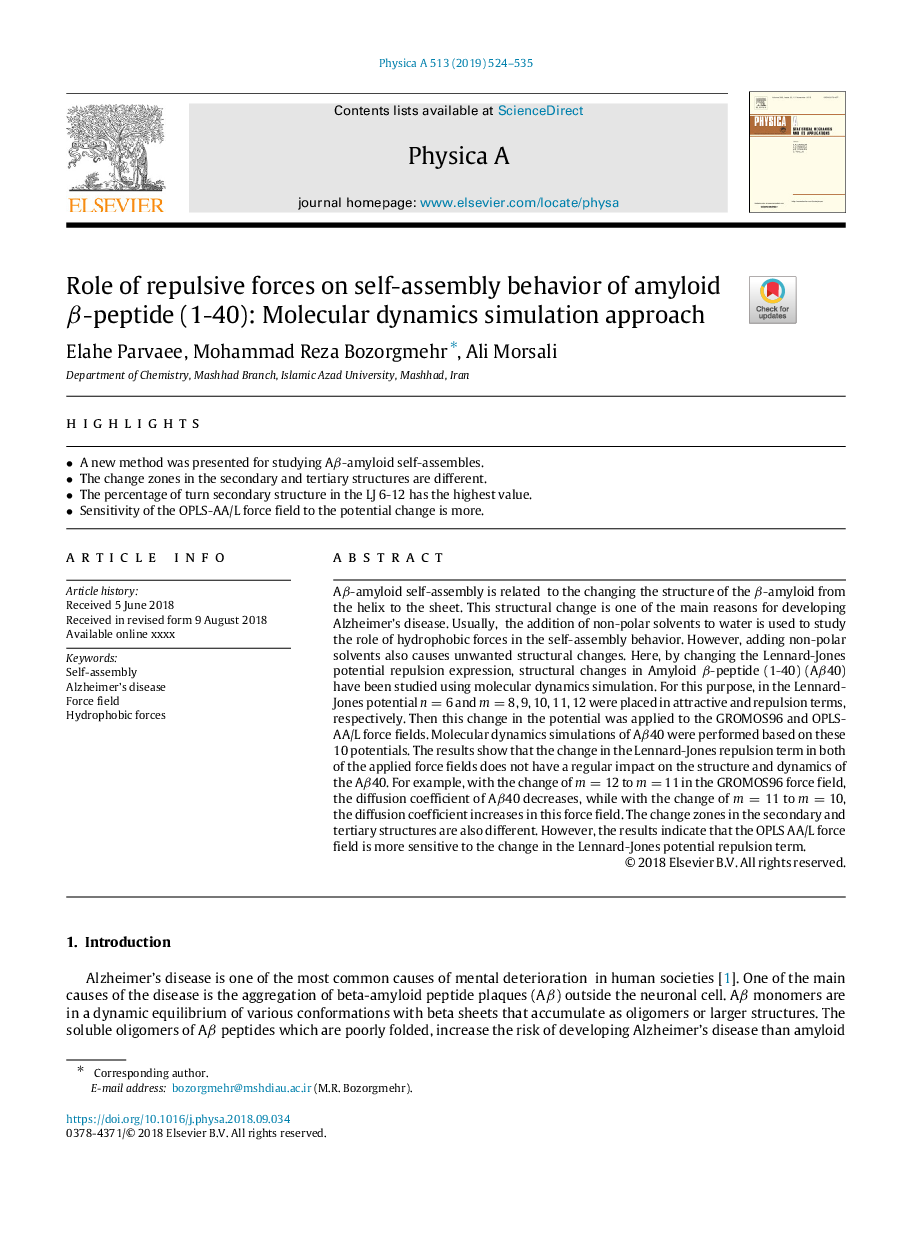| Article ID | Journal | Published Year | Pages | File Type |
|---|---|---|---|---|
| 10140521 | Physica A: Statistical Mechanics and its Applications | 2019 | 12 Pages |
Abstract
Aβ-amyloid self-assembly is related to the changing the structure of the β-amyloid from the helix to the sheet. This structural change is one of the main reasons for developing Alzheimer's disease. Usually, the addition of non-polar solvents to water is used to study the role of hydrophobic forces in the self-assembly behavior. However, adding non-polar solvents also causes unwanted structural changes. Here, by changing the Lennard-Jones potential repulsion expression, structural changes in Amyloid β-peptide (1-40) (Aβ40) have been studied using molecular dynamics simulation. For this purpose, in the Lennard-Jones potential n=6 and m=8, 9, 10, 11, 12 were placed in attractive and repulsion terms, respectively. Then this change in the potential was applied to the GROMOS96 and OPLS-AA/L force fields. Molecular dynamics simulations of Aβ40 were performed based on these 10 potentials. The results show that the change in the Lennard-Jones repulsion term in both of the applied force fields does not have a regular impact on the structure and dynamics of the Aβ40. For example, with the change of m=12 to m= 11 in the GROMOS96 force field, the diffusion coefficient of Aβ40 decreases, while with the change of m=11 to m= 10, the diffusion coefficient increases in this force field. The change zones in the secondary and tertiary structures are also different. However, the results indicate that the OPLS AA/L force field is more sensitive to the change in the Lennard-Jones potential repulsion term.
Related Topics
Physical Sciences and Engineering
Mathematics
Mathematical Physics
Authors
Elahe Parvaee, Mohammad Reza Bozorgmehr, Ali Morsali,
